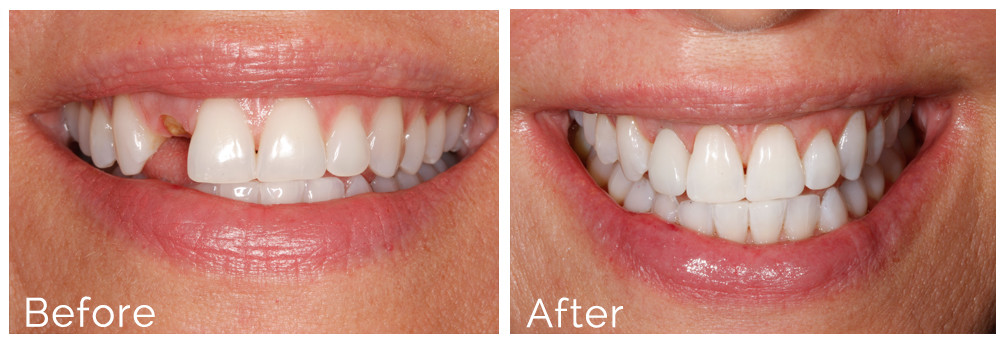Unknown Facts About Dental Sense
Unknown Facts About Dental Sense
Blog Article
Dental Sense - The Facts
Table of ContentsRumored Buzz on Dental SenseThe Basic Principles Of Dental Sense How Dental Sense can Save You Time, Stress, and Money.The Greatest Guide To Dental Sense
are medical gadgets operatively dental implanted right into the jaw to recover an individual's capacity to chew or their look. They give support for artificial (phony) teeth, such as crowns, bridges, or dentures. When a tooth is lost due to injury or disease, a person can experience issues such as rapid bone loss, defective speech, or modifications to chewing patterns that lead to pain.Dental dental implant systems include an oral implant body and dental implant joint and may likewise consist of an abutment addiction screw. Dental veneers cost. The oral implant body is surgically inserted in the jawbone in place of the tooth's root. The dental implant joint is typically connected to the implant body by the abutment fixation screw and expands through gums into the mouth to sustain the connected synthetic teeth
(https://experiment.com/users/dentalsense1)Structure of The Oral Implant System choosing dental implants, speak with your oral provider concerning the prospective benefits and risks, and whether you are a prospect for the procedure. Things to take into consideration: Your general health and wellness is a crucial consider identifying whether you are an excellent prospect for dental implants, how much time it will require to heal, and for how long the implant might remain in location.
Cigarette smoking may influence the recovery process and lower the lasting success of the implant. The healing process for the dental implant body may take numerous months or longer, during which time you typically have a momentary joint in location of the tooth. the oral implant procedure: Meticulously comply with the oral hygiene directions offered to you by your dental company.
About Dental Sense
Implant failure can lead to the demand for another operation to take care of or replace the implant system. Recovers the capability to eat Restores cosmetic appearance Helps maintain the jawbone from reducing as a result of bone loss Protects the health and wellness of the surrounding bone and periodontals Helps maintain nearby (nearby) teeth steady Boosts high quality of life Damage to surrounding all-natural teeth during implant positioning Injury to the surrounding cells during surgery, such as sinus opening Injury during surgery (for example, fracture of bordering jawbone) Poor function, such as really feeling like the teeth do not bite together usually A feeling that the tooth is loosened or twisting in place arising from an abutment screw loosening Implant body failing (looseness of the implant body) as a result of systemic infection, which might be extra most likely in clients with uncontrolled diabetes mellitus as a result of neighborhood infection in bone and periodontals sustaining the implant body as a result of postponed healing, which might be more probable in individuals that smoke Problem cleansing the gums around the implant, leading to inadequate oral hygiene Untreated gum disease Post-surgical numbness due to nerve impingement or damages Always notify wellness treatment companies and imaging service technicians that you have dental implants before any type of magnetic vibration imaging (MRI) or x-ray treatments.
FDA is not aware of any type of negative occasions reported for MRI or x-ray treatments with oral implants. Oral implants systems are typically made of materials that follow worldwide agreement requirements of the International Organization for Standardization (ISO) or ASTM International. These standards have information of what makes a risk-free product.

An oral implant is a framework that replaces a missing tooth. With screw-like devices, the surgeon inserts an implant right into the jawbone, and it functions as an anchor for a man-made tooth, called a crown. A gadget called an abutment links the man-made tooth to the oral implant. The crown is personalized to fit the person's mouth and match the shade of their teeth.
Some Known Factual Statements About Dental Sense
Some people are not eligible for oral implant surgery. It is for oral doctors to operate people with: intense illnessuncontrollable metabolic diseasebone or soft cells illness or infectionIf these concerns are settled, an Website individual can have the surgery. In, dental cosmetic surgeons avoid from operating individuals with: If people with any of the above undergo dental implant surgical procedure, there is a higher threat of the dental implant failing.

Dental implant surgery is a customized process. It's not the exact same for every person. But the complying with gives a general overview of what you can anticipate your dentist, dental specialist, periodontist or prosthodontist to do: Put the dental implant operatively. Give you time to recover. Affix the message and final crown, bridge or denture.
Next off, your specialist will carefully position the dental implant right into your jaw. If your dental implant is near the front of your mouth, your dental expert will make a momentary tooth for you to put on until you recover.
The 5-Second Trick For Dental Sense
During the recovery stage, your jawbone needs to fuse to the dental implant. This process can take anywhere from 3 to 9 months.
As soon as your implant heals, your dental practitioner can affix the abutment (tiny connector message) and your last restoration (crown, bridge or denture). This usually takes about one hour to finish and might call for a 2nd small surgery. You shouldn't really feel any kind of discomfort throughout your oral implant procedure because your provider will use medication to numb your gum tissues.
Report this page